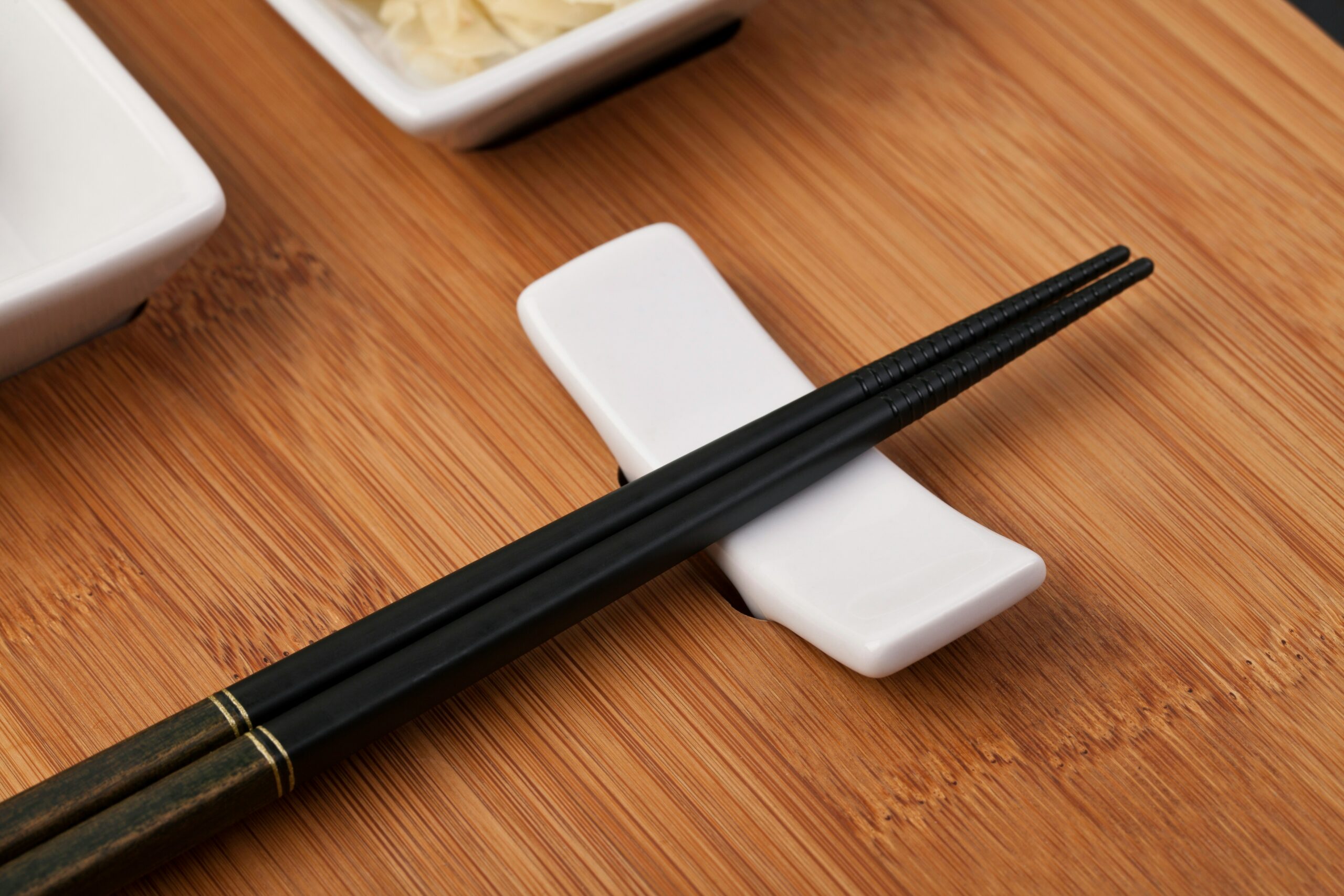In the intricate tapestry of Japanese culture, chopsticks hold a place of both utility and profound cultural significance. This slender pair of sticks, seemingly simple in design, carries with it a history that spans centuries, embodying the evolution of Japanese cuisine, craftsmanship, and societal norms. As we delve into the origins and journey of chopsticks in Japan, we uncover the rich traditions and innovations that have shaped their role in Japanese dining and beyond. From ancient tools to modern-day dining essentials, the story of chopsticks is a fascinating voyage through time, reflecting the enduring spirit and ingenuity of the Japanese people.
1. Unveiling the History: Chopsticks in Japan
The history of chopsticks in Japan traces back to the Nara Period (710–794 AD), when they were first introduced from China. Initially, chopsticks were used primarily for religious ceremonies rather than daily dining. These early chopsticks were likely made from bamboo or wood, materials that were readily available and easy to craft. The adoption of chopsticks for everyday use began to spread during the Heian Period (794–1185), marking a significant shift in Japanese dining culture. This period also saw the refinement of Japanese cuisine, which in turn influenced the way chopsticks were utilized and perceived. Over the centuries, chopsticks became integral to Japanese table settings, evolving in design and material to suit the changing tastes and needs of society.
2. From Ancient Tools to Dining Essentials
Originally, chopsticks served as versatile cooking tools, useful for reaching into pots of boiling water or oil. Their transition from kitchen instruments to dining utensils reflects broader changes in eating habits and food preparation techniques. As Japanese cuisine developed, so too did the art of using chopsticks, transforming them into symbols of culinary sophistication. The etiquette surrounding chopstick use also became more refined, with specific gestures and placements taking on social significance. This evolution from practical tools to dining essentials highlights the adaptability of chopsticks to the cultural and culinary landscapes of Japan.
3. The Evolution of Chopstick Materials
The materials used to make chopsticks have varied widely over the centuries, influenced by availability, social status, and technological advancements. Early chopsticks were typically crafted from bamboo or wood, chosen for their abundance and workability. However, the aristocracy and wealthy often used chopsticks made from more luxurious materials, such as ivory, jade, and gold, to signify their status. In the Edo Period (1603–1868), the use of lacquered chopsticks became popular, adding an element of artistry and craftsmanship to everyday dining. Today, alongside traditional materials, modern chopsticks are also made from plastic, stainless steel, and other sustainable materials, reflecting contemporary concerns for durability and environmental sustainability.
4. Cultural Significance of Chopsticks in Japan
Chopsticks are more than mere eating utensils in Japan; they are a cultural emblem steeped in tradition and etiquette. They play a vital role in Japanese rituals, such as the New Year’s celebration, where special chopsticks with one rounded and one square end are used to connect the human and divine. The manner in which chopsticks are used and handled also carries deep significance, with specific practices considered auspicious and others, like sticking chopsticks vertically into a bowl of rice, seen as taboo because of their association with funeral rites. This deep-seated cultural significance underscores the reverence with which chopsticks are regarded in Japanese society.
5. Regional Variations in Chopstick Design
Across Japan, chopstick design varies by region, reflecting local customs, resources, and culinary practices. For instance, chopsticks from areas known for their lacquerware may be intricately decorated and highly polished, while those from regions famed for bamboo crafts might be simpler and more utilitarian. The length, tip shape, and decoration of chopsticks can also differ, influenced by local dining preferences and the types of food commonly eaten. These regional variations not only highlight the diversity of Japanese culture but also the adaptability of chopsticks to different culinary contexts.
6. The Art of Chopstick Making: A Tradition
Chopstick making in Japan is an art form that combines functionality with aesthetic beauty. Artisans who specialize in chopstick production, known as "hashi-shi," employ a variety of materials and techniques to create utensils that are both practical and beautiful. The process involves careful selection of materials, precise cutting and shaping, and often, intricate decoration. For lacquered chopsticks, multiple layers of lacquer are applied and polished, creating a deep, lustrous finish that can withstand years of use. This dedication to craftsmanship reflects the Japanese principle of "mottainai," or avoiding waste, by creating objects of value and durability.
7. Rituals and Etiquette: The Dos and Don’ts
Chopstick etiquette in Japan is a complex system of rules that governs their use in both daily life and special occasions. Some of the key dos and don’ts include never passing food directly from one pair of chopsticks to another, a gesture reminiscent of funeral rites, and avoiding crossing chopsticks, which is considered disrespectful. Proper placement of chopsticks when not in use is also important, with the tips resting on a chopstick holder or the edge of a plate. Observing these rules is a sign of respect for one’s fellow diners and an acknowledgment of the cultural significance of chopsticks.
8. Chopsticks in Japanese Cuisine: An Integral Part
Chopsticks play an indispensable role in the enjoyment of Japanese cuisine, from delicate sushi to hearty bowls of ramen. Their design allows for precise control and delicate handling of food, reflecting the nuances of Japanese cooking and presentation. Moreover, the use of chopsticks influences the texture and form of Japanese dishes, with foods often cut into bite-sized pieces that are easily picked up. This interplay between utensil and cuisine showcases the harmony and balance valued in Japanese culture.
9. Celebrating Chopstick Day: A Unique Tradition
In Japan, August 4th is celebrated as Chopstick Day, a testament to the cultural importance of these utensils. The date was chosen for its phonetic similarity to the words "hashi" (chopsticks) and "yo" (four), making "8/4" a fitting day to honor this essential tool. The celebration includes various events and activities that promote the proper use and appreciation of chopsticks, ranging from chopstick-making workshops to etiquette classes. Chopstick Day not only celebrates the history and artistry of chopsticks but also encourages mindful dining and respect for traditional customs.
10. The Global Journey of Japanese Chopsticks
Japanese chopsticks have made their mark on the global stage, appreciated for their quality, design, and cultural significance. With the international popularity of Japanese cuisine, demand for authentic Japanese chopsticks has grown, leading to their export around the world. This global journey has introduced people from diverse backgrounds to the nuances of Japanese dining etiquette and the craftsmanship behind each pair of chopsticks. As ambassadors of Japanese culture, they serve as a bridge, connecting people through the shared experience of food.
11. Sustainability in Chopstick Production
The issue of sustainability has become increasingly important in chopstick production, with concerns over deforestation and waste prompting a shift towards more eco-friendly practices. Manufacturers are exploring the use of sustainably sourced materials and reusable chopsticks as alternatives to disposable ones. Initiatives to recycle and repurpose used chopsticks into products like furniture and home accessories are also gaining traction. This focus on sustainability reflects a broader commitment within Japanese society to harmony with nature and responsible consumption.
12. The Future of Chopsticks in Japanese Society
As Japan looks to the future, chopsticks remain an integral part of its cultural identity and daily life. Innovations in design and material, along with a renewed emphasis on sustainable practices, suggest that chopsticks will continue to evolve while retaining their deep-rooted significance. The enduring popularity of chopsticks, both within Japan and internationally, speaks to their versatility, functionality, and the timeless appeal of Japanese tradition. As symbols of harmony, balance, and respect, chopsticks are poised to carry these values forward for generations to come.
The journey of chopsticks in Japan is a testament to the enduring connection between culture, tradition, and innovation. From their humble beginnings as cooking tools to their status as cultural icons, chopsticks encapsulate the essence of Japanese dining and aesthetics. As we explore their history, evolution, and significance, we are reminded of the deep respect for nature, craftsmanship, and etiquette that defines Japanese culture. In the slender silhouette of chopsticks, we find a reflection of the values that have shaped Japan’s past and will continue to guide its future.








